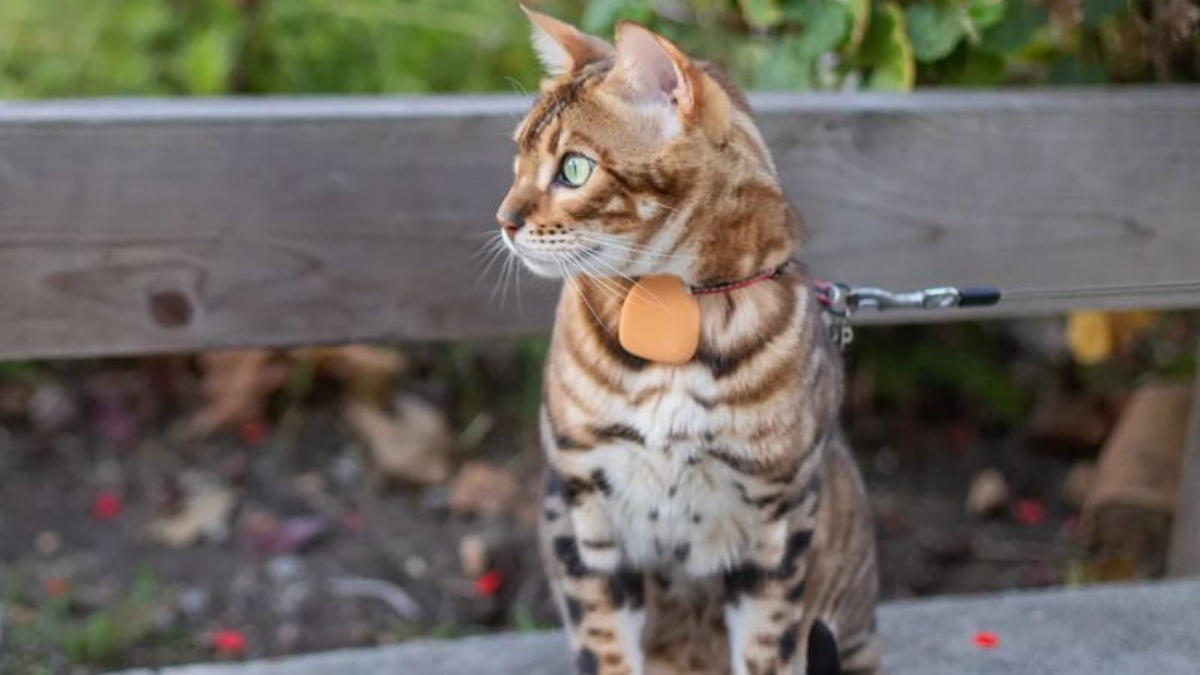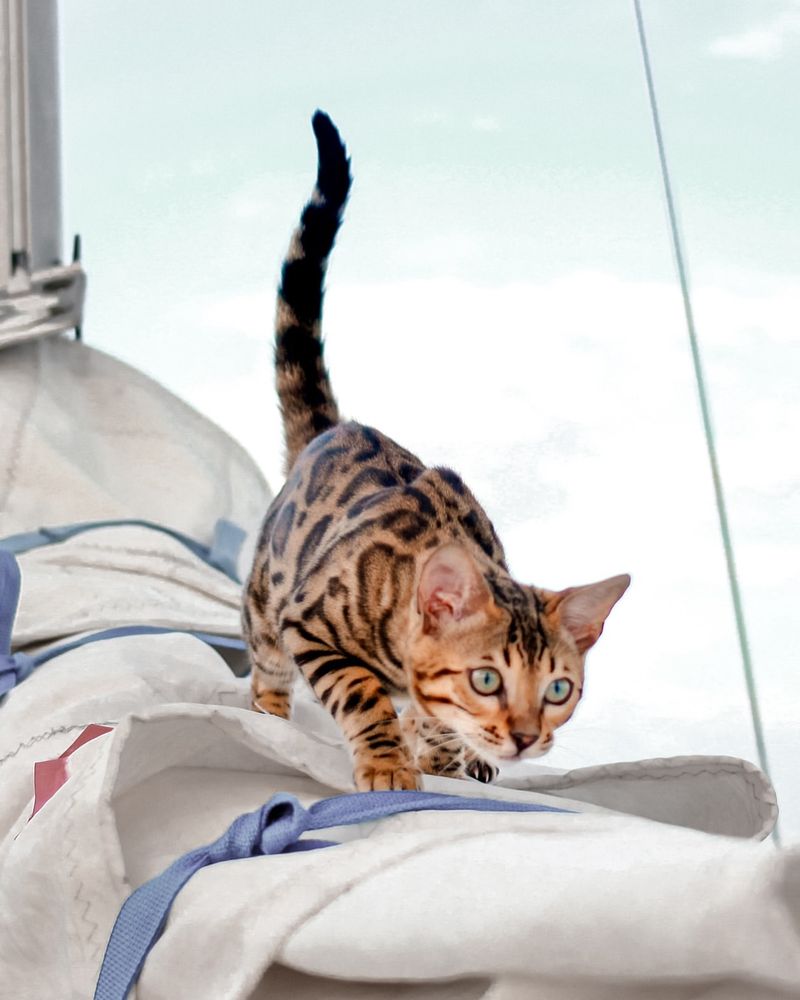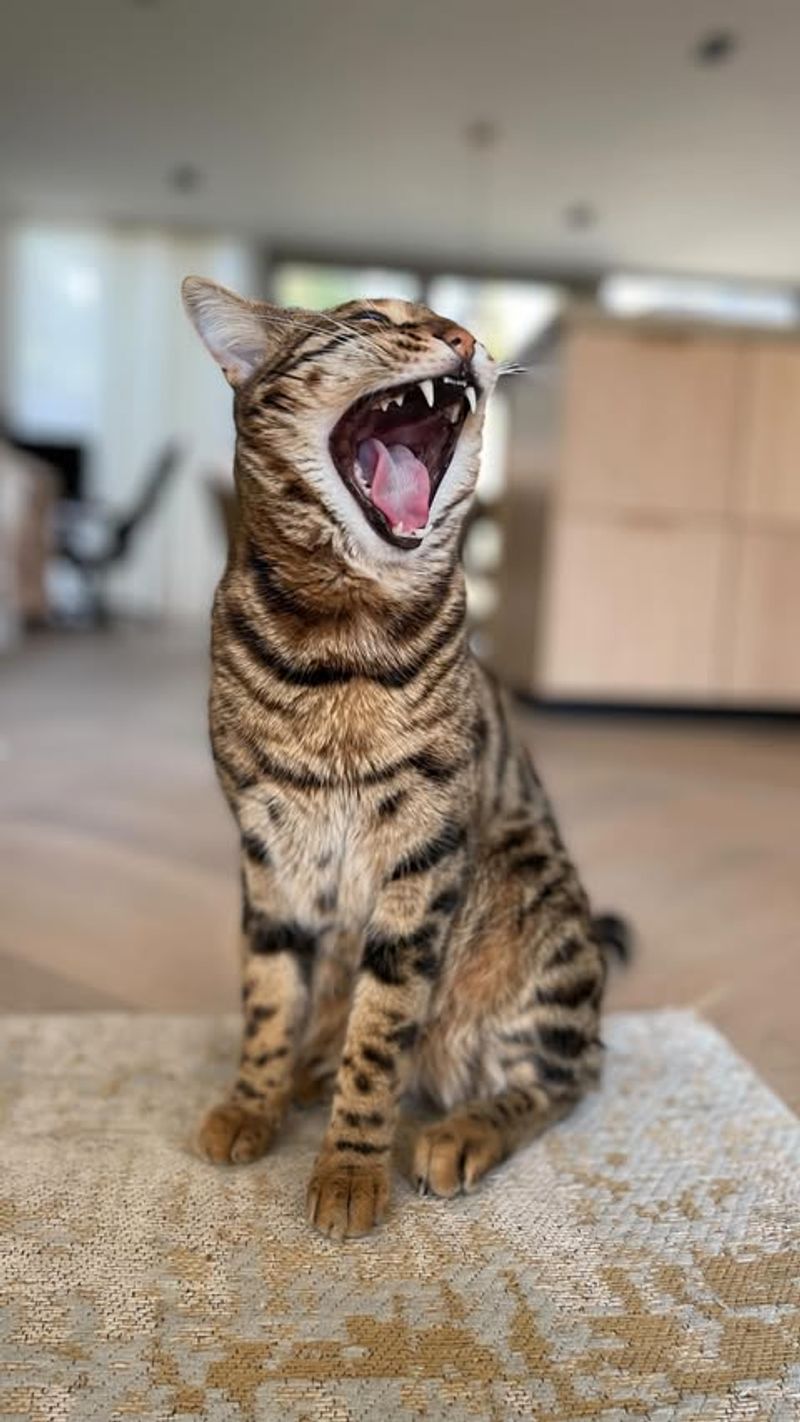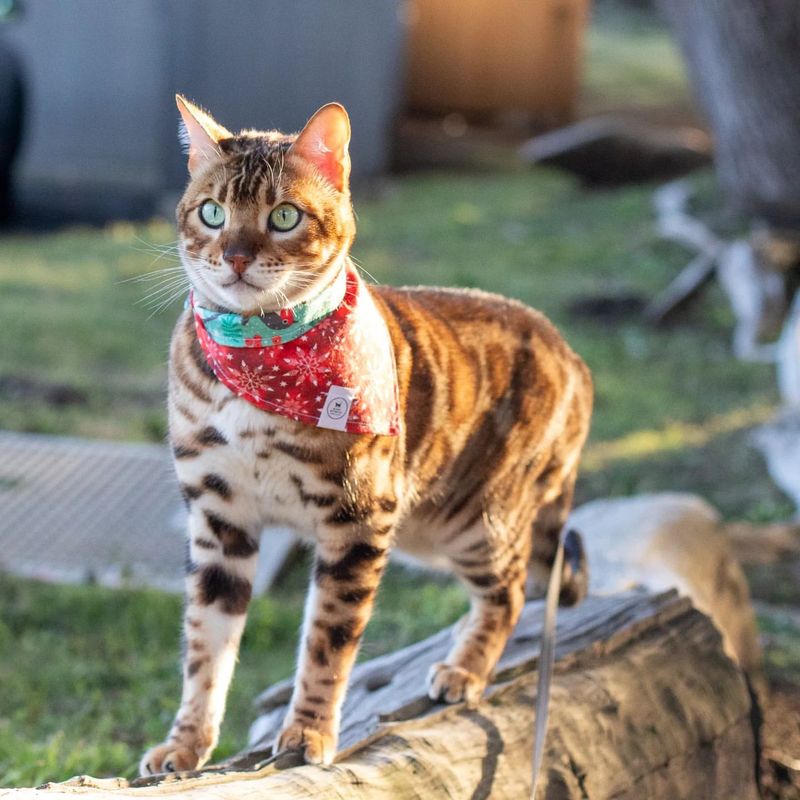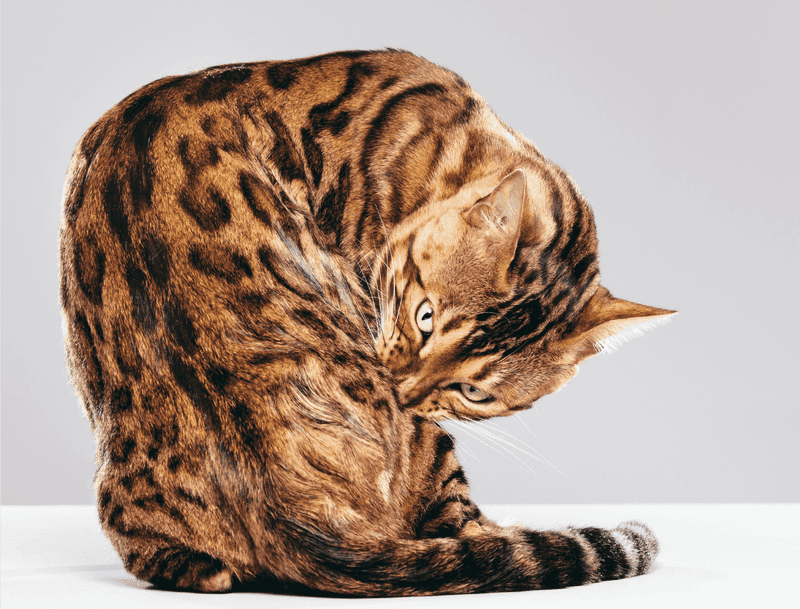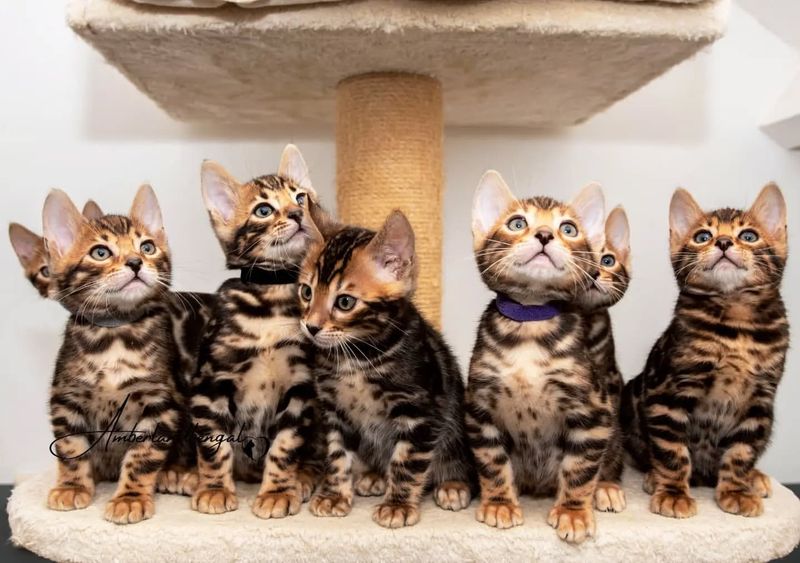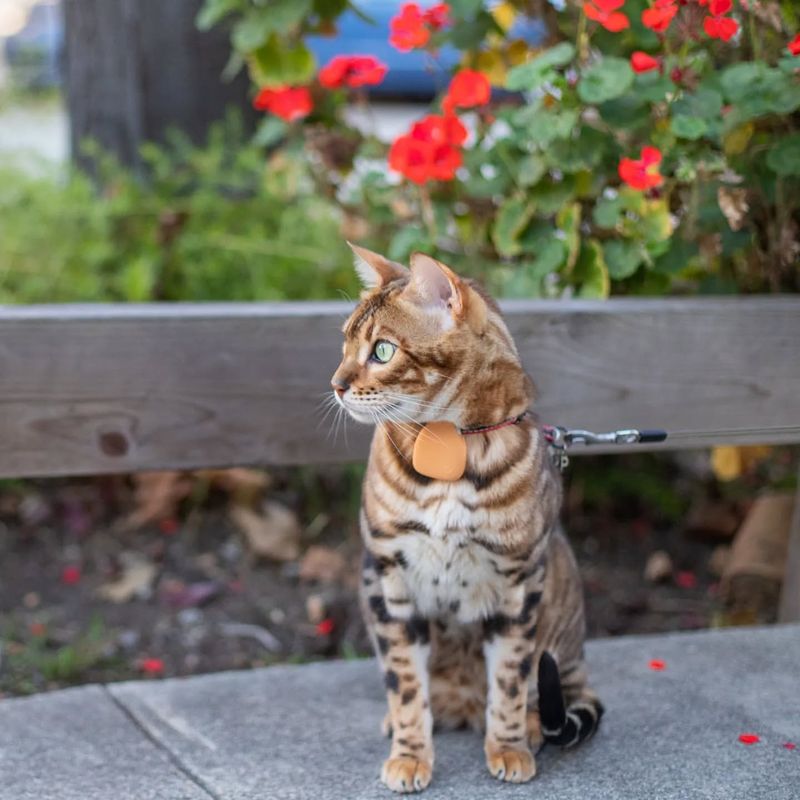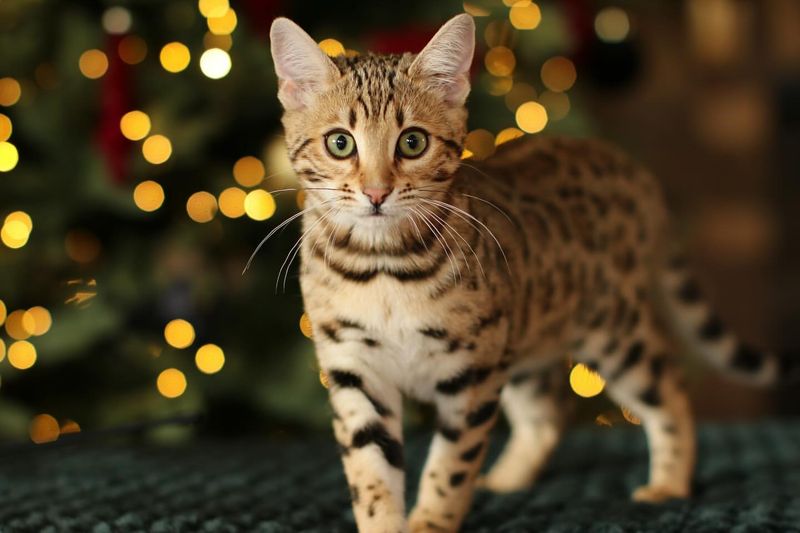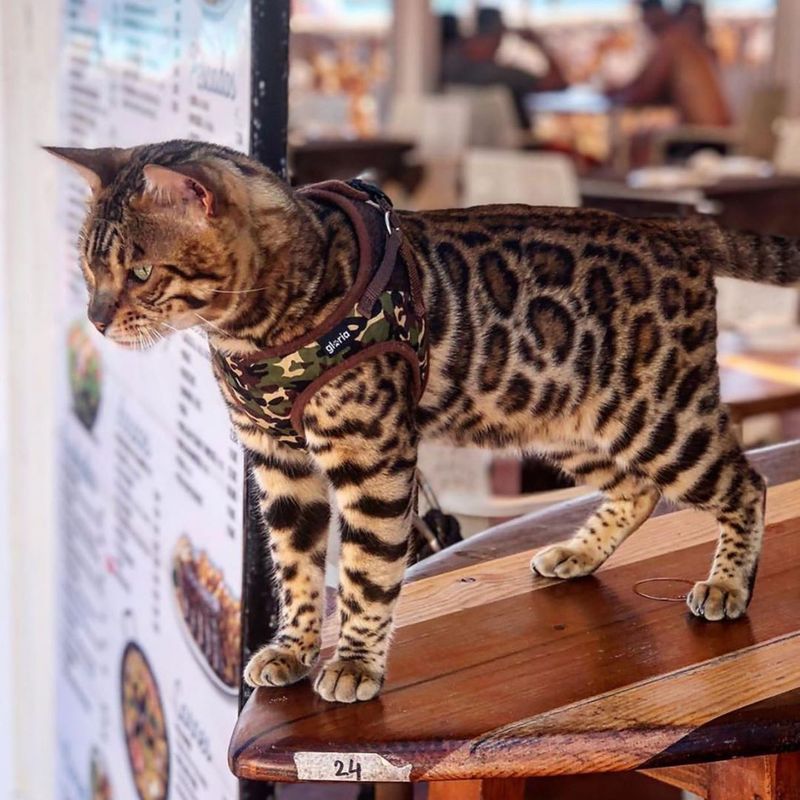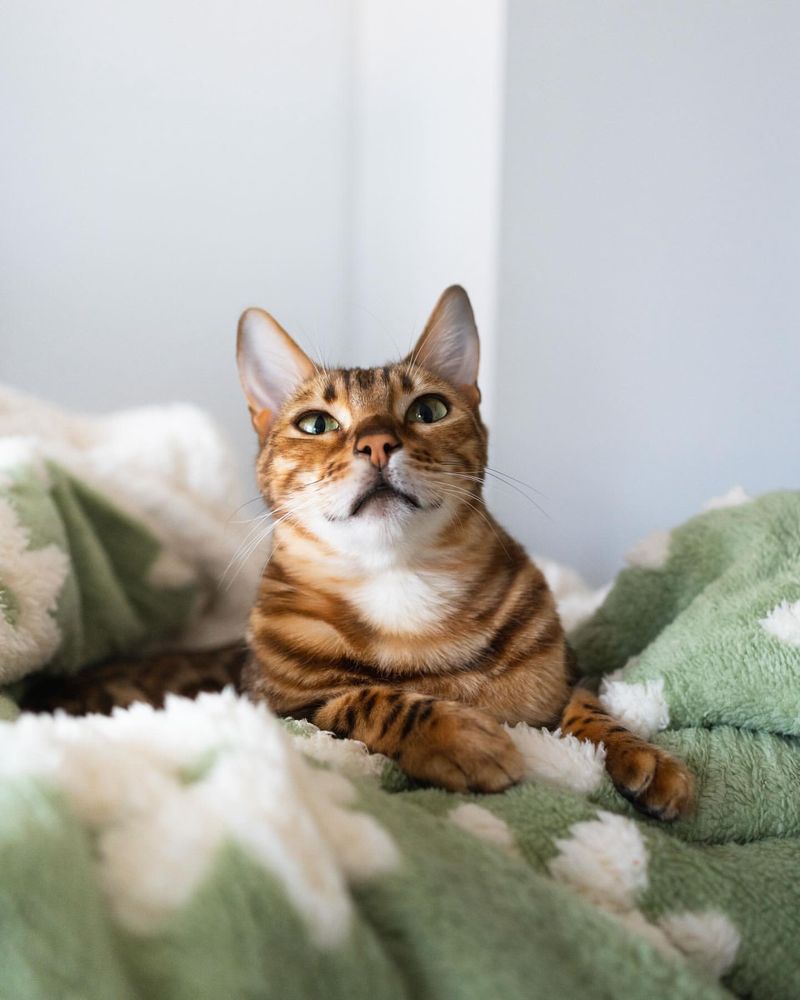📖 Table of Content:
Bengal cats are like the Ferraris of the feline world—sleek, exotic, and ridiculously high-energy. But just like owning a supercar, having a Bengal in your life isn’t all smooth roads and envious glances from the neighbors.
These leopard-lookalikes come with a unique set of challenges that can catch even seasoned cat owners off guard. Sure, they’re gorgeous and playful, but beneath those striking spots lies a whirlwind of quirks that aren’t for the faint of heart.
Before you dive headfirst into Bengal ownership, let’s talk about the real deal—10 difficulties that come with sharing your home with one of these wild-spirited beauties.
1. High Energy Levels
Owning a Bengal cat means signing up for a perpetual workout buddy—but not the kind you can opt out of. These felines have boundless energy that puts most other cats to shame.
Expect them to sprint, climb, and jump their way around your home like they’re auditioning for the feline Olympics. Without proper outlets for their energy, Bengals can turn destructive, scratching furniture or knocking over decorations just for fun.
Daily playtime isn’t optional; it’s a requirement. Interactive toys, puzzle feeders, and even leash training for outdoor adventures can help channel their energy in a positive direction.
If you’re looking for a laid-back lap cat, a Bengal is not your match. But if you’re ready for a dynamic pet that keeps you on your toes, these furry firecrackers might just be your ideal companion.
2. Vocal Nature
If you thought Siamese cats were chatty, wait until you meet a Bengal. These cats don’t just meow—they perform full-scale monologues. Bengals are vocal about everything, from hunger and boredom to their opinion on that squirrel outside the window.
While some people find their expressive nature charming, others might struggle with the constant chatter. Their voices range from chirps and trills to demanding yowls, depending on their mood. This isn’t the kind of cat you can ignore; they’ll make sure you hear them loud and clear.
Understanding their vocal cues and meeting their needs—whether it’s food, attention, or playtime—can help keep the noise at a manageable level.
But make no mistake: Bengals are communicative creatures that thrive on interaction, so be prepared for a running commentary on their day.
3. Strong Hunting Instincts
With their wild ancestry, Bengals are natural-born hunters. They’ll stalk, pounce, and “capture” anything that moves—or doesn’t. That includes toys, insects, and occasionally your toes. While this instinct is impressive, it can be problematic if you have smaller pets like birds, hamsters, or fish.
Bengals see them less as housemates and more as potential prey. Outdoor access can also lead to issues, as they might bring you “gifts” in the form of birds or mice. To satisfy their hunting instincts indoors, invest in wand toys, laser pointers, and interactive games that mimic the thrill of the chase.
Keeping them mentally stimulated and physically active will reduce the chances of them turning your home into a hunting ground. But don’t expect them to fully suppress their predatory side—it’s in their DNA.
4. High Maintenance Grooming
While Bengals don’t have long fur, they’re still a bit high-maintenance when it comes to grooming. Their short, sleek coats shed more than you might expect, meaning regular brushing is a must to keep your furniture fur-free.
Bengals also have a knack for getting themselves dirty, thanks to their curious nature, so occasional baths might be necessary—if you can convince them to tolerate it. Beyond coat care, their nails need regular trimming, and their teeth benefit from consistent brushing to avoid dental issues.
They’re also prone to ear wax buildup, so regular ear cleaning should be part of the routine. Bengals may not require the intense grooming of a Persian, but keeping them looking and feeling their best still requires effort and dedication.
5. Expensive Initial Cost
Bengals are one of the pricier cat breeds on the market, with costs ranging from $1,500 to over $5,000, depending on their pedigree, coat markings, and breeder reputation.
This hefty initial investment doesn’t even account for the accessories you’ll need, like a sturdy scratching post, interactive toys, and possibly a cat wheel for exercise. Quality doesn’t come cheap, and reputable breeders who prioritize health and ethical practices charge accordingly.
Then there are the ongoing costs, including premium food, veterinary care, and pet insurance—Bengals are prone to certain health issues, after all. For prospective owners, the financial commitment is significant, so it’s essential to budget wisely before bringing a Bengal home.
While their beauty and personality are priceless to the right owner, they’re definitely not a budget-friendly choice.
6. Potential Health Issues
Though generally robust, Bengals are prone to specific health issues that can catch owners by surprise. Common concerns include hypertrophic cardiomyopathy (HCM), a heart condition, and progressive retinal atrophy (PRA), which can lead to blindness.
Bengals are also susceptible to certain gastrointestinal issues, including irritable bowel syndrome (IBS). Regular vet check-ups and preventive care are critical to catching these problems early. Investing in pet insurance is highly recommended, as treatments for these conditions can be costly.
Breeding practices also play a significant role in health outcomes, so always choose a reputable breeder who tests their cats for genetic conditions. While these issues don’t affect every Bengal, they’re something to consider when committing to this breed.
7. Territorial Behavior
Bengals don’t just live in your home—they claim it as their kingdom. Territorial by nature, they may display possessiveness over certain spaces, toys, or even people.
This can lead to issues if you have other pets, as Bengals aren’t always eager to share their domain. Introducing them to new animals requires patience and careful planning to prevent conflicts. Territorial spraying can also be a problem, especially in unneutered males.
Ensuring they’re spayed or neutered and providing ample space with plenty of resources—like litter boxes, scratching posts, and perches—can help reduce territorial disputes.
While their assertive behavior can be managed with proper training and socialization, Bengals will always have a streak of independence that sets them apart.
8. High Social Needs
Bengals are social butterflies disguised as cats. They crave interaction and thrive on human attention, making them unsuitable for owners who spend long hours away from home. Loneliness can lead to destructive behaviors, like excessive meowing, scratching, or even depression.
If you’re often out, consider getting a second pet to keep your Bengal company—though introductions must be handled carefully due to their territorial nature. Interactive play sessions, cuddles, and mental stimulation are essential to keeping them happy.
These cats don’t just want to be around you; they want to be involved in whatever you’re doing.
For the right owner, their affectionate and engaging personality is a delight. But if you’re looking for a low-maintenance companion, a Bengal might not be the best fit.
9. Curiosity and Mischief
“Curiosity killed the cat” must have been written about a Bengal. These cats are insatiably curious and love exploring every nook and cranny of your home.
Nothing is off-limits—not your countertops, cupboards, or even the inside of your washing machine. They’ll open doors, knock over plants, and test the durability of your window screens.
While their antics are often entertaining, they can also be frustrating and, at times, dangerous. Bengal-proofing your home is a must, which means securing fragile items, using childproof locks, and ensuring they can’t access hazardous areas.
Providing them with safe outlets for their curiosity, like interactive toys and climbing trees, can help redirect their mischievous behavior. But make no mistake: a Bengal will always keep you on your toes.
10. Not Ideal for Small Apartments
Bengals need space—both physical and mental. A small apartment can feel more like a cage than a home to these active, adventurous cats. Without enough room to roam, they can become bored and destructive.
Ideally, Bengals thrive in homes with plenty of vertical space, like cat trees, shelves, and climbing walls, where they can exercise and satisfy their love for exploration. If you live in an apartment, be prepared to dedicate significant effort to enriching their environment.
Daily playtime, interactive toys, and regular outdoor walks (on a leash) can help, but it’s no substitute for a more spacious living arrangement. Bengals aren’t couch potatoes, and their needs can quickly outgrow the confines of a small home.
If space is limited, consider whether you can meet their unique demands before committing to this breed.
